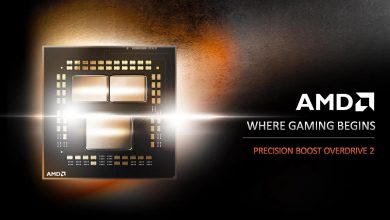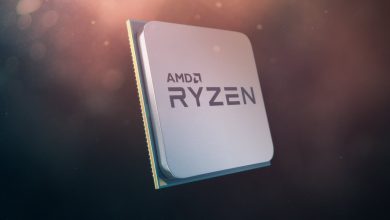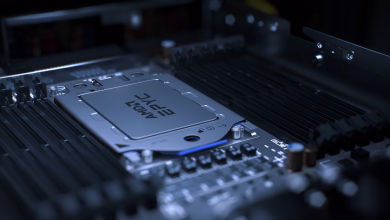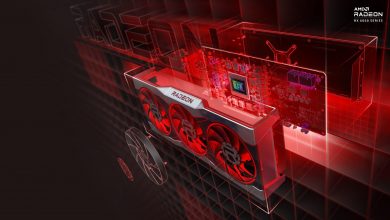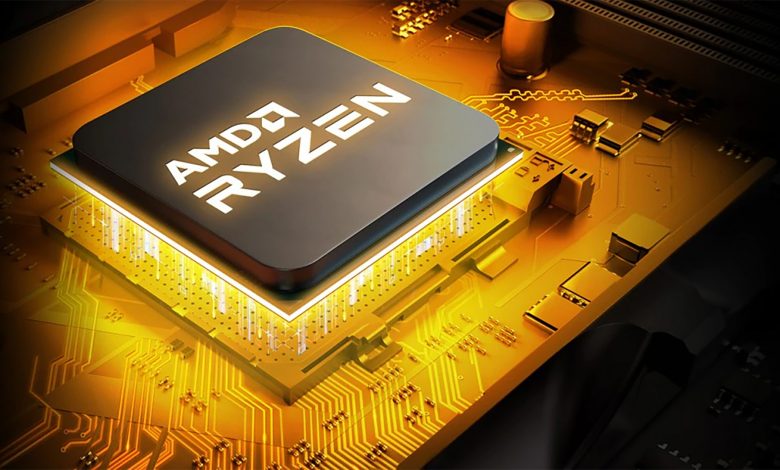
Juicy details about AMD’s AM5 processor, which is set to succeed the AM4, has been so graciously leaked, emphasizing that it is set to support Ryzen CPUs and APUs, which tout the Zen 4 core architecture.
On Twitter, leaker ExecutableFix confirmed details that this upcoming new platform will back Double Data Rate 5 (DDR5) memory, with the next-generation AMD consumer chips keeping PCIe Gen4 support, WCCFTech reported.
Looking at previous consumer platform sockets, AMD has mostly been sticking with PGA designs. However, according to the latest leaks, AMD is making the jump to LGA with the upcoming Zen 4 CPUs, transferring all pins from the processor to the motherboard socket. AM5 will also feature dual-channel DDR5 support, but will unfortunately remain stuck on PCIe 4.0.
DDR5 is an exciting prospect, featuring capacities of up to 128 GB per memory module, with data rates of up to DDR5-10000.
AM5 😏
– LGA-1718
– Dual-channel DDR5
– PCI-e 4.0
– 600 series chipset— ExecutableFix (@ExecuFix) May 22, 2021
AMD AM5 to Rival Intel’s Alder Lake-5
AMD AM5 is positioned to rival Intel’s Alder Lake-5, also a strong player in the PCIe Gen4-DDR5 field. Alder Lake is forecasted to ship later this year or early next year. As such, it seems Intel has beaten AMD in the DDR5 race. As it keeps PCIe 4.0 support, which is a good move since the best graphics cards and sold state drives (SSDs) are far from saturating the PCIe 4.0 interface. As such, choosing PCIe 5.0 would be unwise since would need to prove extra premium for AM5 motherboards as this would need a new chipset.
The leaker likewise said the new Zen4 chips would also have the same AM4 square size of 40 millimeters.
The next generation AM5 socket, as further revealed by ExecutableFix, is seen as AMD’s most startling upgrade in years. Its most revealing transformation is the change from a pin grid array (PGA) to the Intel-like land grid array (LGA) socket, which will have 1,718 pins to link with the CPU. As such, the Ryzen desktop processors will not have pins but gold contact pads underneath them, VideoCardz.com noted.
AMD AM5 to Carry “Raphael” Codename
It was rumored that the Zen4 and AM5 packages will carry the codename “Raphael”. These “Raphael” Ryzen Desktops is set to replace the current Zen 3 “Vermeer” Ryzen 5000 desktops. From the leaks gathered, these Raphael CPUs will carry the five-millimeter Zen 4 core base and six-millimeter !/O dies in a chiplet design.
In addition, AMD is looking at launching its next-gen AM5 motherboard series, but the ExecutableFix believes that these boards will be the 600 series, which will replace the existing X570.
There were reports that Raphael will launch sometime in 2022, probably late in the year. This would mean Intel’s Alder Lake would have reached the market first and support DDR5 and PCIe Gen5 before AMD rolls out the AM5 platform.
This Ryzen upgrade would have been powered by the Zen 3+ core architecture, code named “Warhol”, but reports said this might push through. There are also reports suggesting that AMD will be unveiling a refresh based on an optimized version of Zen 3. This immediate Zen 3 upgrade, rumors say, will have a performance increase, and would be the last line of chips for either on the AM4 platform.
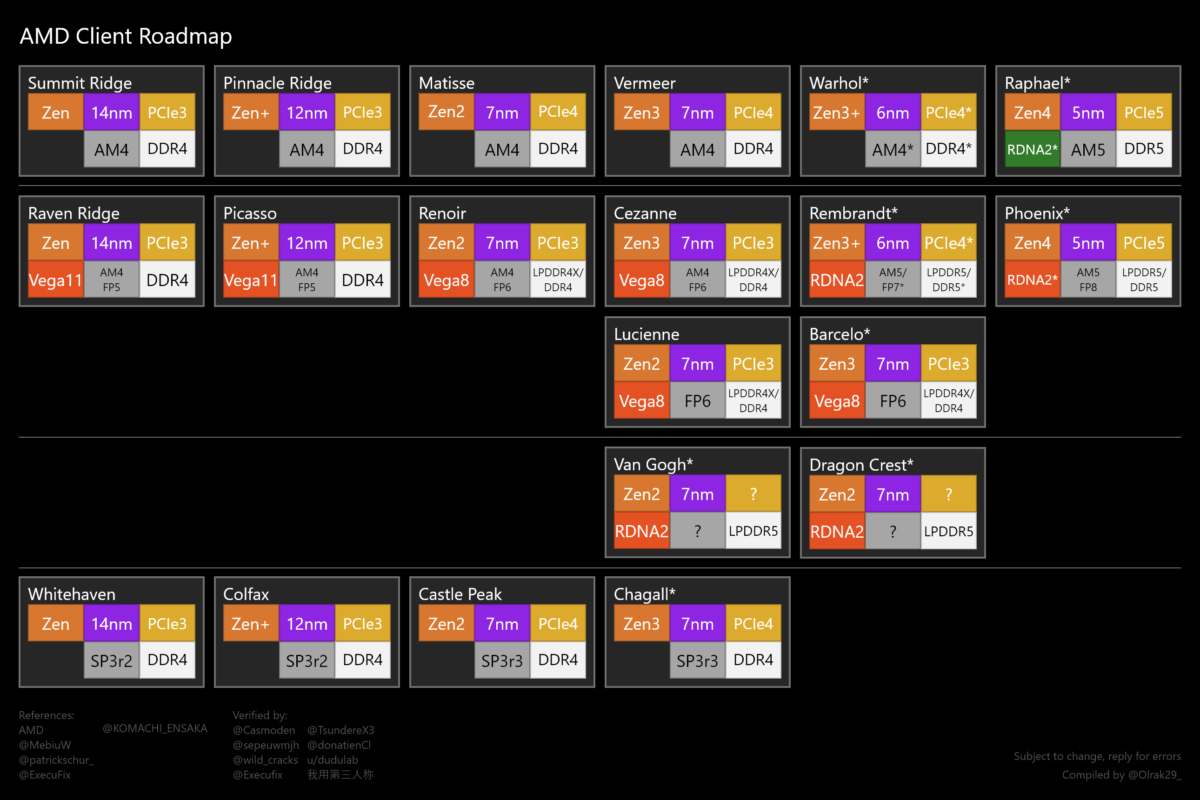
Biggest platform upgrade ever
According to the leak, the next-generation AMD AM5 socket will be the biggest platform upgrade in several years for team red. The AM4 socket has so far lasted four generations of Zen architectures starting with Zen, Zen+, Zen 2, and the existing Zen 3 parts. Starting Zen 4, AMD will have its brand new AM5 platform ready to support future Ryzen Desktop CPUs and APUs.
One of the biggest changes mentioned on the AM5 platform is the switch from the PGA socket to the LGA socket. The AM5 platform will feature the LGA 1718 socket and as the name suggests, it’ll comprise 1718 pins that will make contact with the CPU. That’s actually 18 more pins than the Intel LGA 1700 socket which will support the next-generation Alder Lake CPUs. That’s also 387 more pins than the previous AM4 socket which used PGA(pin grid array) 1331. AMD is making a switch from PGA to LGA with the new AM5 socket. That would mean that we won’t see any more Ryzen Desktop chips with pins beneath them but instead, we would see contact pads (gold) similar to those underneath Intel Desktop CPUs.
The brand new Zen 4 architecture is rumored to deliver up to 25% IPC gain over Zen 3 and hit clock speeds of around 5 GHz.
‘Mark, Mike, and the teams have done a phenomenal job. We are as good as we are with the product today, but with our ambitious roadmaps, we are focusing on Zen 4 and Zen 5 to be extremely competitive.
‘There will be more core counts in the future – I would not say those are the limits! It will come as we scale the rest of the system.’
AMD CEO, Dr. Lisa Su via Anandtech
AMD’s Rick Bergman on Next-Gen Zen 4 Cores For Ryzen CPUs
Q- How much of the performance gains delivered by AMD’s Zen 4 CPUs, which are expected to use a 5nm TSMC process and might arrive in early 2022, will come from instructions per clock (IPC) gains as opposed to core count and clock speed increases.
Bergman: “[Given] the maturity of the x86 architecture now, the answer has to be, kind of, all of the above. If you looked at our technical document on Zen 3, it was this long list of things that we did to get that 19% [IPC gain]. Zen 4 is going to have a similar long list of things, where you look at everything from the caches, to the branch prediction, [to] the number of gates in the execution pipeline. Everything is scrutinized to squeeze more performance out.”
“Certainly [manufacturing] process opens an additional door for us to [obtain] better performance-per-watt and so on, and we’ll take advantage of that as well.”
The Raphael Ryzen Desktop CPUs are also expected to feature RDNA 2 onboard graphics which means that just like Intel’s mainstream desktop lineup, AMD’s mainstream lineup will also feature iGPU graphics support. The Zen 4 based Raphael Ryzen CPUs aren’t expected till late 2022 so there’s still a lot of time left in the launch. The lineup will compete against Intel’s Raptor Lake 13th Gen Desktop CPU lineup.


